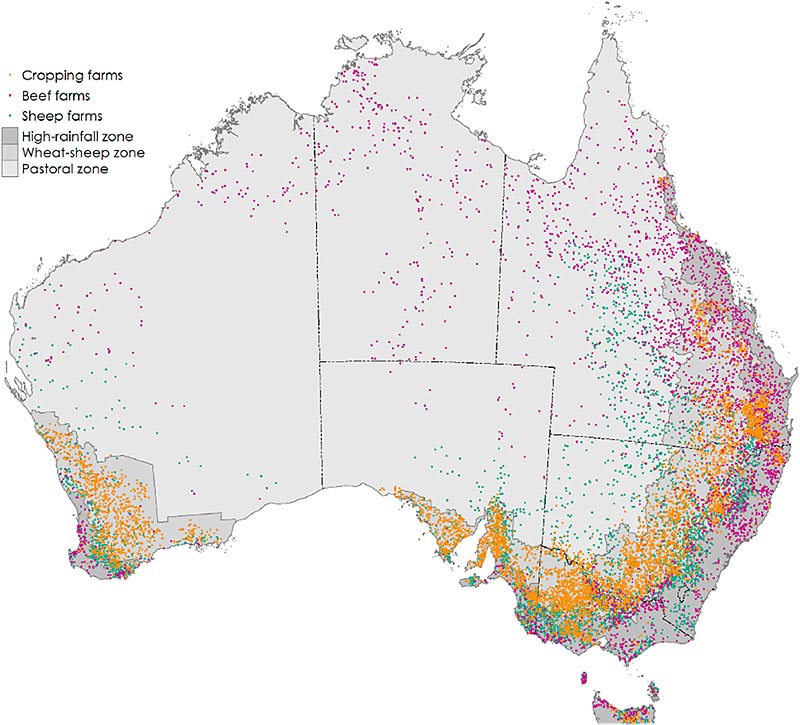ABARES farmpredict is a microsimulation model of Australian farm businesses based on data from ABARES farm survey program. The farmpredict model can simulate physical and financial outcomes for Australian farm businesses given prevailing climate conditions and commodity prices. This model is actively used by ABARES for farm forecasting, drought monitoring and climate scenario modeling
ABARES farmpredict model

farmpredict applies machine learning methods to derive predictions—at an individual farm business level— of the production of outputs, the use of inputs and changes in farm stocks conditional on prices, fixed inputs, climate conditions and other farm characteristics. The model then applies accounting rules to derive estimates of revenues, costs, changes in stock holdings and profits in accordance with farm survey definitions.
Currently, the model provides coverage of the Australian broadacre farming sector as represented by the Australian Agricultural and Grazing Industry Survey (AAGIS). A detailed description of the methods and data sources underlying ABARES farmpredict is provided by Hughes, Soh, Lawson and Lu (2022).
ABARES farmpredict provides farm-scale results with national coverage of the Australian broadacre industry

Note: Map is derived from AAGIS farm survey data but does not show actual farm locations for confidentiality reasons
- Climate scenarios: the model can be applied to assess the impacts of historical changes in climate or simulate the potential impacts of future climate scenarios
Climate change impacts and adaptation on Australian farms
Modelling the effects of climate change on the profitability of Australian farms
- Forecasting and drought monitoring: the model is actively used by ABARES to forecast farm business outcomes. The model is also part of the ongoing Australian Agricultural Drought Indicators.
Australian Agricultural Drought Indicators (AADI) project
- Farm risk analysis: the model can be applied to simulate the sensitivity and exposure of farm profits to climate and drought risk
The effects of drought and climate variability on Australian farms
Hughes, N., Soh, W., Lawson, K. and Lu, M. (2022) Improving the performance of micro-simulation models with machine learning: The case of Australian farms, Economic Modelling
Hughes, N., M. Lu, W. Soh, K. Lawson (2022) Modelling the effects of climate change on the profitability of Australian farms, Climatic Change
Hughes, N., Soh, W., Boult, C., Lawson, K. (2022) Defining drought from the perspective of Australian farmers, Climate Risk Management
Chancellor, W., Hughes, N., Zhao, S., Soh, W., Valle, H., Boult., C. (2021) Controlling for the effects of climate on total factor productivity: A case study of Australian farms, Food policy
